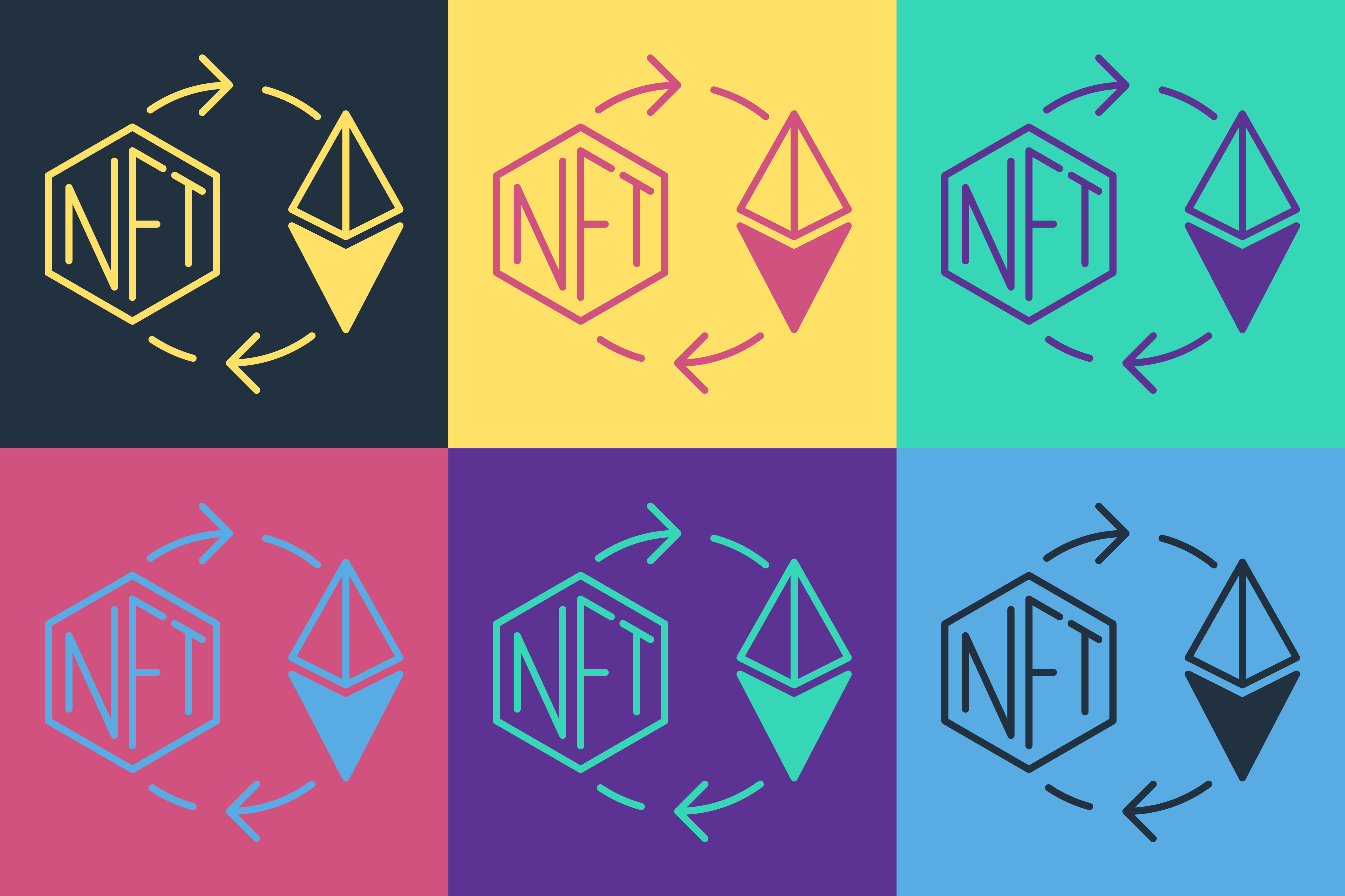Staking Crypto: What is Staking and How Does it Work?
Interested in crypto staking? You’ve probably heard that staking crypto can earn you money. But how does staking work? And how much can you really earn? We’ll explain what staking means and how it can help you earn passive income. Plus, we’ll take a look at the best crypto staking platforms to help you get started.
Ready to learn more? Let’s go!
Here’s what we’ll cover.
What is staking crypto?
How does staking crypto work?
Staking vs mining
Which cryptos can be staked?
How much can you make staking crypto?
Can you lose money staking crypto?
Is staking crypto safe?
Best place to stake crypto

What is staking crypto?
Staking crypto is a process that verifies transactions on proof-of-stake blockchains.
Ok – that’s a mouthful – let’s break it down.
Staking crypto is similar to crypto mining. It has two purposes:
- To verify transactions – staked cryptocurrency is used to validate transactions so they can be added to the blockchain.
- To create new coins – each time a block is added to the blockchain, new coins are minted. These coins are given to the participant who validated the block.
To help validate blockchain transactions, staking participants “lock-up” (i.e. stake) a certain amount of their crypto holdings. These staked coins are used by the blockchain network to verify transactions. This model of processing transactions is known as proof-of-stake.
What is proof-of-stake? Learn more here – Coming Soon
Who can participate in staking crypto?
Anyone can participate in staking crypto – so long as they hold the minimum required amount to stake.
As a reward for staking, you’ll earn crypto for each transaction you validate. Most commonly, this reward is paid in the same crypto that you’re staking. Luckily, many of the best crypto exchanges make staking easy. As a result, you can easily earn passive income just by staking the cryptocurrencies you already hold!
Another great way to earn passive income with your crypto is through yield farming (aka liquidity mining). Learn more about yield farming here – What is yield farming?
Now that you have a better idea of what staking is, let’s take a look at how crypto staking works.
How does staking crypto work?
Staking crypto isn’t as complicated as is sounds (on the surface).
Think of it like a high-interest savings account. Essentially, you commit to locking away a certain amount of your cryptocurrency for a particular period. During this time, your coins are used to validate transactions on the blockchain.
Like a savings account, you’ll earn a certain annual percentage yield (APY) in return for locking up your funds (and allowing the blockchain to use them). Each time your crypto is used to validate a block, you’ll earn a reward. Most commonly, crypto staking rewards are paid in the same cryptocurrency that is being staked.
Although the technology behind staking is new, innovative, and complex, crypto exchanges make staking simple. In fact, all you’ll need to do to stake your proof-of-stake cryptocurrencies is click a button – and the exchange will do the rest.
Staking vs Mining
Crypto staking and mining are used to validate transactions on the blockchain. Both processes also create new coins.
There are various methods of validating blockchain transactions. For example, proof of authority, proof of elapsed time, etc. However, staking and mining are the two most common.
While both processes have similar objectives (i.e. validation through consensus), there are many differences between staking crypto vs mining. Here are some of the most important differences:
1. Consensus Mechanism
Whether a cryptocurrency uses staking or mining to validate transactions, depends on the type of consensus mechanism that it utilizes. Staking is used on proof-of-stake blockchains, while mining is used on proof-of-work blockchains.
Learn more about consensus mechanisms and the difference between proof of stake vs proof of work here – Coming Soon.
2. Cost
Crypto mining requires the use of powerful computers (called miners) to solve complex mathematical problems. These miners can be extremely costly. On the other hand, staking crypto simply requires holders to lock away their coins for a fixed term. This is much less complex and often more cost-effective.
Keep in mind, that if you are locking away your coins in a staking pool your assets will be illiquid. That being said, some exchanges will allow you to unstake your holdings at any time.
3. Energy-Efficiency
The high-powered computers used in the process of crypto mining require a substantial amount of energy. Staking, however, uses significantly less energy.
Although many people believe that this makes staking more environmentally friendly, it is possible to use renewable energy for crypto mining. For example, many proof of work cryptocurrencies use solar or wind power to generate the energy necessary for mining. So, even though mining requires more energy, these types of projects are sustainable and eco-friendly.
4. Rewards
Whether you’re mining or staking crypto, you’ll get rewards. More specifically, you’ll receive payment in the same cryptocurrency that you’re staking or mining.
A blockchain will use either proof-of-stake or proof-of-work – but not both. So, the choice to mine or stake depends on what cryptos interest you or which you’re currently holding. For example, if you’re interested in Bitcoin, and you want to participate in validating transactions, you’ll need to mine Bitcoin. However, if you prefer a cryptocurrency like Cardano (ADA), you’ll need to stake coins to participate.
When it comes to profit, staking and mining are typically quite similar. In most cases, crypto miners will generate more valuable rewards. However, this is offset by the high cost of equipment and the electricity required to mine.
On the other hand, staking rewards are impacted by the length of the lock away period. As a result, profits may be negatively impacted by volatility. Regardless, the initial cost to participate in a staking pool is significantly lower than mining.
Which cryptos can be staked?
Many blockchains currently use proof-of-stake to verify transactions. As a result, there are various cryptocurrencies that you can stake. In addition, many new and existing blockchains are adopting a proof of stake consensus. Ethereum, for example, began as a proof of work project and migrated to a proof of stake consensus mechanism.
As of May 2022, some of the most common cryptos that can be staked include the following.
Proof of Stake Coins
- Solana (SOL)
- Polkadot (DOT)
- Cardano (ADA)
- Binance Coin (BNB)
- Algorand (ALGO)
- Cosmos (ATOM), and more
How much can you make staking crypto?
You can earn up to 20% or more per year staking crypto! On average, holders who participate in staking pools earn 5% to 20% APY. This amount depends on the crypto that you’re staking, as well as the staking pool or exchange you’re using.
As you’ve probably noticed, these returns are substantially more than what you’d get with a traditional savings account. This is why many people are flocking to cryptocurrency and DeFi to replace outdated financial vehicles and systems.
Can you lose money staking crypto?
You can lose money staking crypto. Although staking rewards are appealing, there are various ways that you can lose money when staking your crypto.
For example, in some cases, you may need to lock up your crypto for a certain period when staking. During this period, you won’t be able to access your coins. Therefore, if the price of the coin crashes, you won’t be able to sell to mitigate any losses. So, for instance, if you are staking your cryptocurrency for 20% APY but the coin price falls 80% (which is possible in a bear market), you will lose money.
That said, if you are staking a strong project, like Ethereum (which has great utility and long-term potential), its price should recover in the long term.
Is staking crypto safe?
Now, you’re probably wondering – is staking crypto safe? The answer is – yes and no. We know, we know, not the answer you were hoping for. But let us explain.
Many large cryptocurrency exchanges have made staking very easy and accessible. Staking your crypto with a well-known and trusted exchange is relatively safe in terms of theft. However, there are other risks to staking.
Here are the most important risks of staking crypto that you should consider:
- Volatility – the price of crypto can change drastically from one day to the next. If your coins are in a staking pool, you won’t be able to sell them if the price skyrockets or starts to decline.Keep in mind, that not all staking pools have a lockup period. So, if you are concerned about volatility, look for projects that don’t require you to lock up your funds.
- Liquidity – some cryptocurrencies have more liquidity than others. If a coin is illiquid, this means that it cannot be easily converted into cash or other coins. Therefore, you must ensure any project you are investing in has enough liquidity to pay you out when it comes time to cash in. Look for strong projects with consistent and high trading volumes. Staking your crypto on a reliable and trusted exchange is also important to ensure liquidity.
- Security – for the most part, strong cryptocurrencies and established exchanges are pretty secure. However, this security partially relies on you – be sure to enable security features and never share your login details or private keys. That said, there is the risk of losing your private keys. Always be sure to store your private keys in a safe and secure manner.
Best Place to Stake Crypto
There are many options for staking crypto. Some of the best places to stake crypto include:
Centralized Cryptocurrency Exchanges
Using a crypto exchange is one of the easiest ways to stake your crypto. Just be sure that the exchange is a trusted platform.
Cold Wallets
Certain cold wallets (aka offline wallets) will also allow you to stake your crypto. In this case, you’ll need to keep your coins at the same address for the entirety of the lockup period.
Learn more about cold wallets here – What is a cold wallet?
Staking-as-a-Service Platforms
These platforms are dedicated to crypto staking. The platform will take care of all the technical details so that you can easily stake your coins. However, they will charge a fee for their services.
Staking crypto on a staking-as-a-service platform is often referred to as “soft staking.” Soft staking does not require a lockup period. Instead, you only need to hold a certain balance of the coin at any given time.
Learn more about soft staking here – What is soft staking?
DeFi Platforms
DeFi platforms, or decentralized finance platforms, will also allow you to stake your crypto. These platforms have no central governing body that oversees operations. Instead, a smart contract locks your funds and you become a validator on the chosen blockchain network.
Pro Tip: truly decentralized staking is typically the most lucrative, as there is no central organization or middleman to cut into your profits. However, this is also the riskiest strategy.
Ready to Start Staking Crypto?
Staking crypto is a great way to earn passive income just for holding your crypto! Best of all, you’ll earn a much higher return than with traditional financial tools like savings accounts and term deposits.
That said, before you decide to start staking your cryptocurrency, it’s important that you do your research. Check out several sites and options to determine what is best for you. Keep in mind, that cryptocurrency is a highly volatile asset. As a brand new asset class, crypto platforms and services are still ironing out their operations and improving their products.
Never invest more than you can afford to lose.
More Crypto Content You’ll Like
What is NFT vs Crypto: Understanding the Key Differences and Similarities
Wondering – what is NFT vs crypto? Unlock the secrets of these digital assets, explore their similarities and differences, and learn how they’re shaping the digital future.
Understanding Leverage Trading in Crypto: How to Amplify Your Gains (+Possible Risks)
Learn what leverage trading crypto is and how it works. Plus, the top exchanges for leverage trading crypto.
3 NFT Smart Contract Examples (Solidity, Vyper and Rust) + What Each Function Means
Explore 3 NFT smart contract examples (in Solidity, Vyper, and Rust) and learn what each function in the code does.



